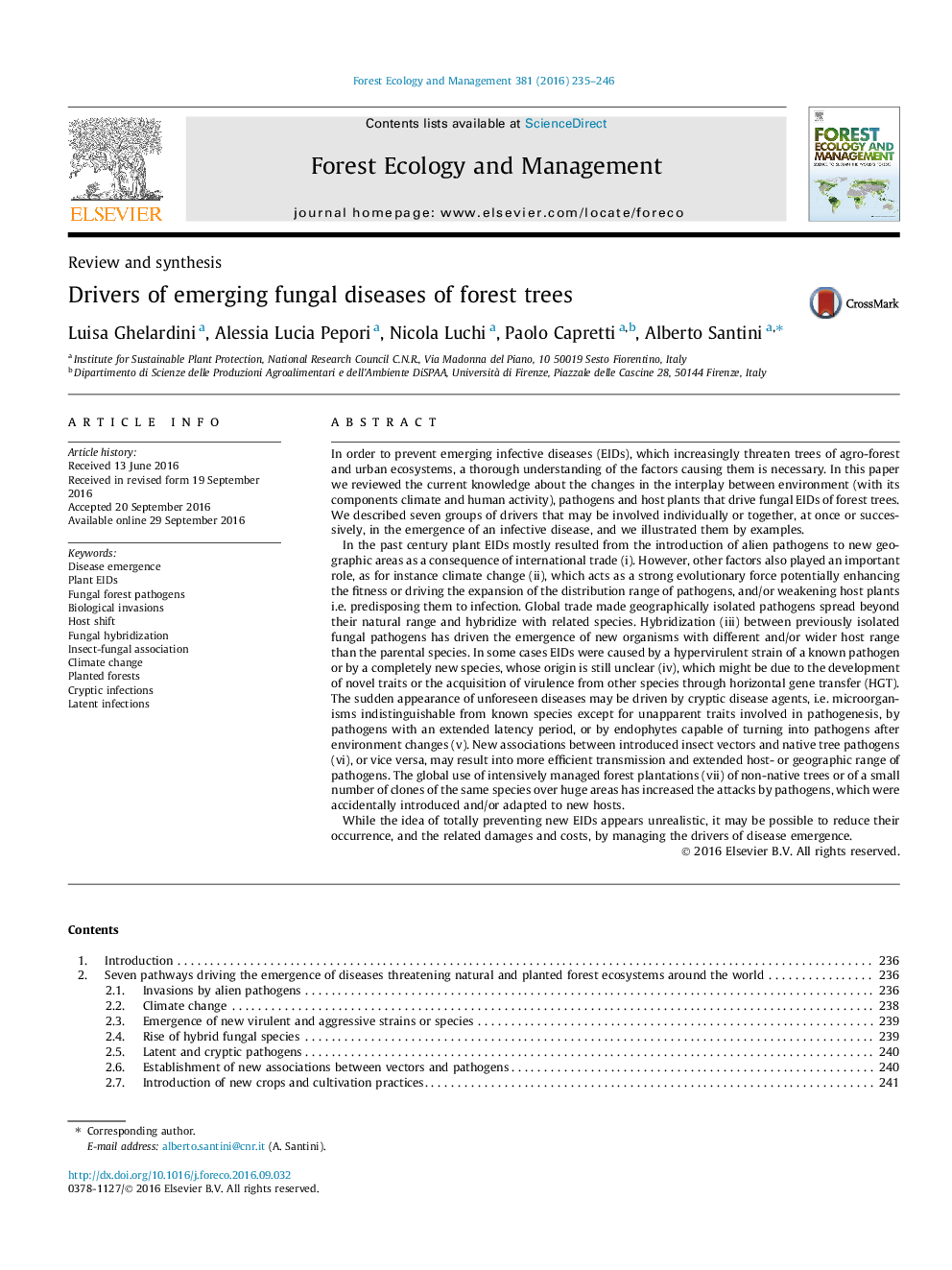| کد مقاله | کد نشریه | سال انتشار | مقاله انگلیسی | نسخه تمام متن |
|---|---|---|---|---|
| 6459536 | 1421377 | 2016 | 12 صفحه PDF | دانلود رایگان |
- The main drivers of emerging infective diseases (EIDs) of forest trees are described.
- EIDs of forest trees mostly resulted from the introduction of alien pathogens.
- However, other factors also play an important role, as for instance climate change.
- Forest EIDs have complex causes linked to the current global-scale perturbations.
- New strategies are needed to face the impact of megadisturbances on forest health.
In order to prevent emerging infective diseases (EIDs), which increasingly threaten trees of agro-forest and urban ecosystems, a thorough understanding of the factors causing them is necessary. In this paper we reviewed the current knowledge about the changes in the interplay between environment (with its components climate and human activity), pathogens and host plants that drive fungal EIDs of forest trees. We described seven groups of drivers that may be involved individually or together, at once or successively, in the emergence of an infective disease, and we illustrated them by examples.In the past century plant EIDs mostly resulted from the introduction of alien pathogens to new geographic areas as a consequence of international trade (i). However, other factors also played an important role, as for instance climate change (ii), which acts as a strong evolutionary force potentially enhancing the fitness or driving the expansion of the distribution range of pathogens, and/or weakening host plants i.e. predisposing them to infection. Global trade made geographically isolated pathogens spread beyond their natural range and hybridize with related species. Hybridization (iii) between previously isolated fungal pathogens has driven the emergence of new organisms with different and/or wider host range than the parental species. In some cases EIDs were caused by a hypervirulent strain of a known pathogen or by a completely new species, whose origin is still unclear (iv), which might be due to the development of novel traits or the acquisition of virulence from other species through horizontal gene transfer (HGT). The sudden appearance of unforeseen diseases may be driven by cryptic disease agents, i.e. microorganisms indistinguishable from known species except for unapparent traits involved in pathogenesis, by pathogens with an extended latency period, or by endophytes capable of turning into pathogens after environment changes (v). New associations between introduced insect vectors and native tree pathogens (vi), or vice versa, may result into more efficient transmission and extended host- or geographic range of pathogens. The global use of intensively managed forest plantations (vii) of non-native trees or of a small number of clones of the same species over huge areas has increased the attacks by pathogens, which were accidentally introduced and/or adapted to new hosts.While the idea of totally preventing new EIDs appears unrealistic, it may be possible to reduce their occurrence, and the related damages and costs, by managing the drivers of disease emergence.
133
Journal: Forest Ecology and Management - Volume 381, 1 December 2016, Pages 235-246
